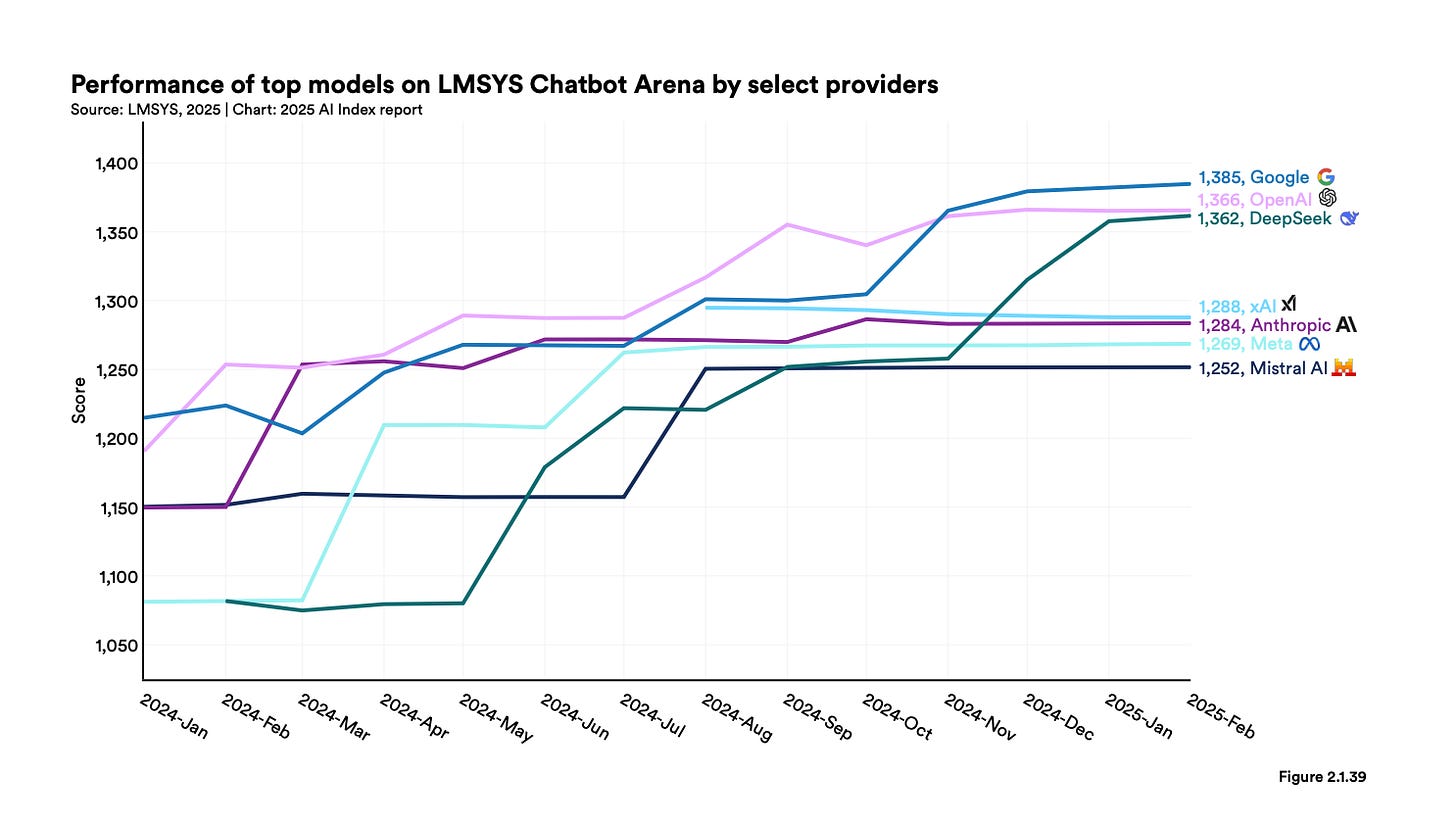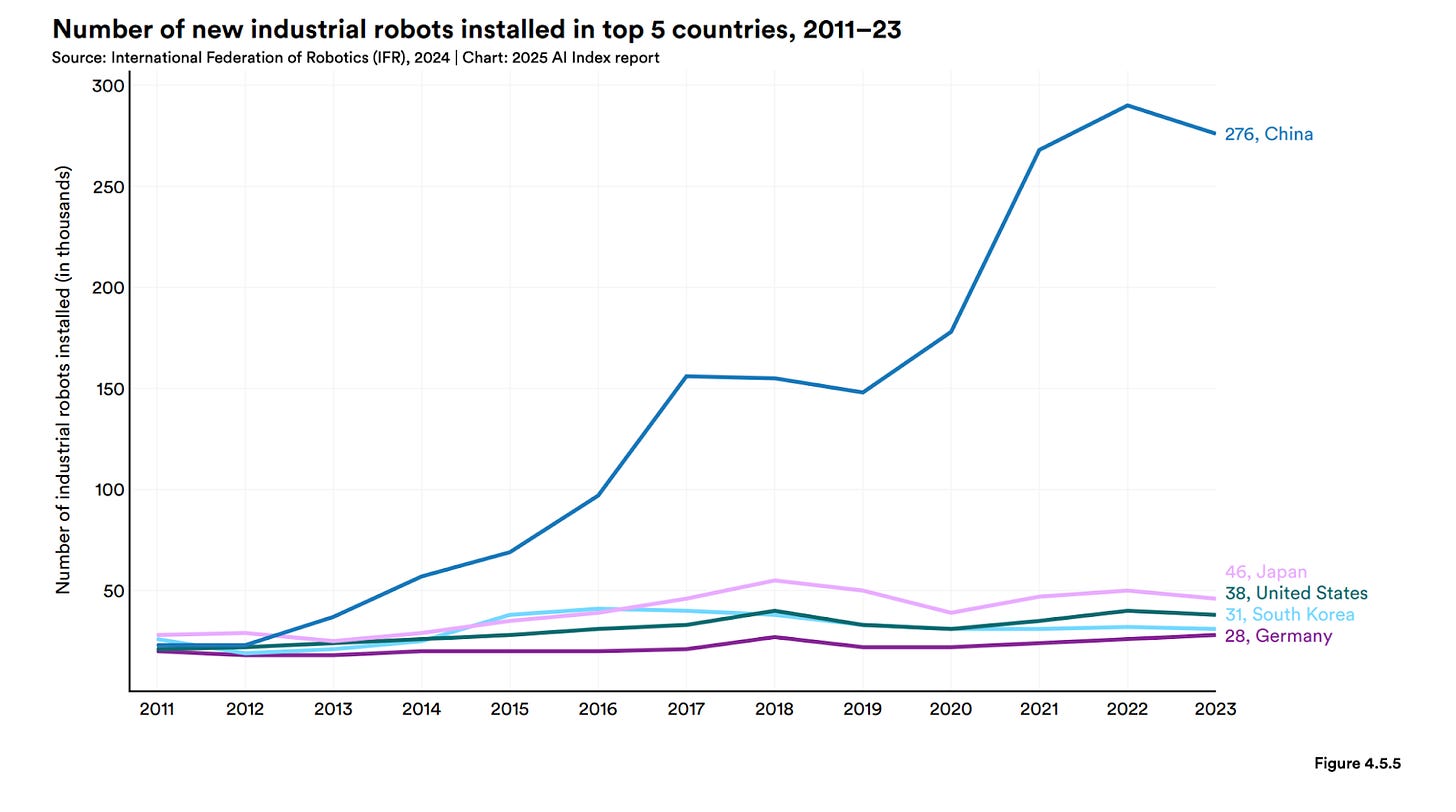The AI race to go "full stack"
Also: we talk to dolphins now. Interspecies communication may be one of the coolest outcomes from AI today.
Happy Friday!
I hope you like the re-designed format for The Strange Review. I’ve really enjoyed writing this newsletter over the last year, and plan to share more of what we are seeing from the Strange frontiers, including longer-form essays and deep dives into research areas we find interesting.
As always, feedback is very much welcome!
Now, let’s get into it.

As frontier models become increasingly commoditized, model makers like OpenAI and Google look to go increasingly "full stack" to own the end user experience.
In the past year, Google and OpenAI have gone neck-and-neck on model performance. But now, the competition is heating up across products, which I believe is where the real distribution moat lies.
This week, it was leaked that Windsurf, the popular AI IDE, is said to be in talks to be acquired by OpenAI for $3B. This would be one of the largest OpenAI acquisitions to date.
Owning the “full stack” from infrastructure to end user experience may be the only way to win the AI race, which increasingly looks like a winner-take-most game.
Alphabet (Google’s parent company) is leaning in hard. It plans to invest a staggering $75B on data centers and AI infrastructure this year alone. It’s a big bet, but one the well-capitalized tech giant (sitting on nearly $96B in cash) may need to make to stay competitive in what could be the most disruptive cycle of the decade.
This is especially since OpenAI is growing its user base, fast. They’ve reached 800M users this year, and will triple revenues to $12.7B.
In comparison, Google Workspace boasts around 3 billion users (that’s 37% of the world — wild), but its Gemini product is estimated to have only 42 million active users.
OpenAI’s 800M user base dwarfs other notable AI companies. Anthropic sits at 19M users with an estimated $1.4B in ARR, and Perplexity has 15M users generating $656M in ARR.
As AI reduces web clicks and reshapes the future of search, it’s no surprise that Google feels pressure to win this race. And likely sees OpenAI as one of its biggest threat.
I predict we’ll see many more AI-related M&A moves this year, especially from tech giants facing early signs of disruption to their core business models.
[1] OpenAI releases o3 and o4-mini, reasoning models that can agentically use and combine every tool within ChatGPT — but seems to have elicit mixed reactions, with users complaining that the more expensive o3 was prone to hallucinations. On the same day, OpenAI released Codex CLI, an open source coding agent that runs on your computer.
[2] Nvidia's $500B investment in U.S. manufacturing: Nvidia plans to invest up to $500 billion in U.S.-based AI infrastructure over the next four years, including domestic production of its Blackwell GPUs at TSMC's Arizona facility. The company is collaborating with partners like Foxconn and Wistron to establish additional production facilities in Houston and Dallas.
[3] The EU has a €20B initiative to build up to five AI super factories, each housing over 100,000 advanced AI processors. The facilities aim to quadruple current AI training capabilities and support the development of complex AI models in sectors like healthcare, robotics, and scientific research.
[4] You can now use Google’s Veo2 to generate videos in Gemini and Whisk. I think Veo2 has totally flown under the radar. This was an example I made with Veo2
In comparison, I created one with OpenAI’s Sora, using the same prompt.
One of the biggest breakthroughs in AI could be the least talked about: interspecies communication. This week, Google shared news about DolphinGemma, an AI model trained on dolphin speak.
The total available stock of computing power from NVIDIA chips is doubling every 10 months, enabling the training of ever-larger models. (Epoch AI)
Google is winning on AI fronts (The Algorithmic Bridge)
Dhyravya Shah created a “Super Memory” app for adding user-specific memory / context for AI apps. This means any llm you use would have your context to pull from, vs starting from a blank slate.
I found this graph on number of installed industrial robots from the Artificial Intelligence Index Report interesting.








